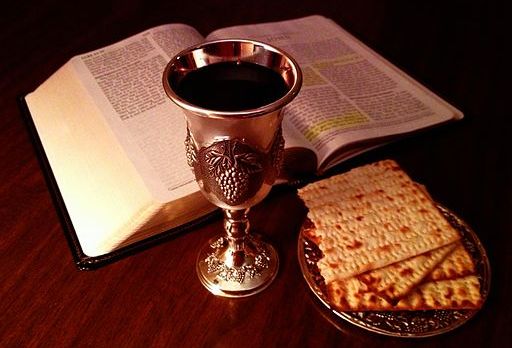Each year around Holy Thursday, someone asks what I think about Christians holding a Passover seder. They ask me because my family is Hebrew Catholic — that is, we’re Catholics who enjoy a Jewish heritage (my parents became Catholic when I was four). We preserve some Jewish traditions, especially Passover, because it’s what our ancestors have done for millennia, and because we see the profound connections between Passover and Easter. We try to live in the light that is shed as the Old Covenant is fulfilled in Christ.
But Hebrew Catholics are unique. Most Catholics do not have Jewish heritage, and so most Catholics should not attempt to celebrate a seder on their own. It’s wonderful to attend a seder that your Jewish friends are hosting, but you should not put on your own, either with your parish or at home.
I feel bad saying it. I understand why Christians would want to have a simple seder as a way of feeling more connected to Christ and His apostles, and enhancing our understanding of the Passion and of the Eucharist. It’s a beautiful ritual, and it conveys some truths about God and His people in a way that reading or studying really can’t do. So, I’m sorry. If you’re local, come on over and join us. I’m making so much soup!
But here are two reasons you shouldn’t do it on your own:
The first is because, well, you’re Catholic.You already have your own unimprovable ritual. Not everyone is lucky enough to belong to a parish where the Mass is celebrated in a reverent way, but the sacrifice of the Mass isour sacrifice and our meal. There is no reason to commemorate the Last Supper in addition to the commemoration and recreation that happens at the Holy Sacrifice of the Mass. A seder is beautiful and profound, but it is just a ritual commemoration. The Mass is an actual, efficacious sacrifice, a sacrament that was instituted by Christ, and it doesn’t need to be added to.
The second reason is because it really is offensive to Jews. We hear a lot about cultural appropriation, and this is what it looks like, well-meant or not. If you can’t see why, imagine you’re a Cherokee, and your family has an annual ritual commemoration of the Trail of Tears. Now imagine that some rich white lady from Marin County gets wind of what you do, and she thinks, “Wow, that is so beautiful! And it actually has many parallels to my own life and the struggles I have gone through myself!” So she does some Googling and then recreates her own Marin County Trail of Tears Organic Fiesta Meditation Pow Wow, complete with songs in a language she doesn’t understand, and a tasty spread of bastardized version of traditional foods, plus some meaningful touches she thought of herself . . . all done awesomely Indian-Style, as far as she can tell.
So imagine you’re the Cherokee. Would it matter much if the lady said, “But I mean it with the greatest respect, and it means so much to me!” You might believe her, but you still wouldn’t be thrilled. You might even be insulted, or horrified.
It’s a fairly wobbly parallel, so I’m using it mainly to explain the emotional impact that Christian seders might have on practicing Jews. Obviously, as Catholics, we truly can read all the events of the Old Testament in the light of Christ, and it really is all true. But to Jews, who are still faithfully waiting for the Messiah to come, a Christianized seder says to Jews, “Not only are we going to take your heritage for our own, but we’re going to tell you what it all means.” Ugh.
For Catholics who are really aching to forge a deeper understanding of the continuity between the Old and New covenants, may I suggest Brant Pitre’s excellent and accessible Jesus and the Jewish Roots of the Eucharist? I know, I know, it’s a book, not a ceremony. But it’s full of startling insights and scholarship, and you are guaranteed to learn something new and thrilling.
If you want to engage your senses on Holy Thursday (beyond the foot washing, which let’s not even talk about. Feet feet feet. Lady feet, Muslim feet, more and more feet, twenty-four feet!), it would be fine to make some unleavened bread and some lamb and serve it with wine in your home. That will give you a small idea of what it felt like to be in that room on Holy Thursday, or what it felt like to be waiting with girded loins for the sign to flee Egypt.
Make the sign of the cross, know that the blood of the Lamb marks you and protects you, and be content.
***
Image by John Snyder (Own work) [CC BY-SA 3.0 (http://creativecommons.org/licenses/by-sa/3.0)], via Wikimedia Commons

